The Best Stomach Exercises For All Levels Of Gym-Goer
Crunch your core with these beginner, intermediate and advanced exercises
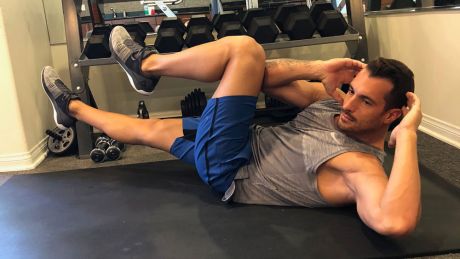
A flat stomach isn’t something worth pursuing because of how it will make you look. A waistline that’s in proportion to your height is one marker of being a healthy weight, and this simple string test can determine your waist-to-height ratio.
If you find out you need to trim the fat around your middle, the best place to start is not with the exercises on this page. You’ll want to begin by ensuring you’re eating a healthy diet, then undertake some workouts designed to help you lose fat. You can’t target fat loss in specific areas of the body, but by powering through resistance circuits like these that work a variety of muscles while also ramping up your heart rate, you’ll burn truckloads of calories and lower your overall body fat percentage.
Then you can turn to strengthening the muscles around your stomach and even begin the process of sculpting a six-pack. The good news is that having begun a fat-loss fitness regime, you have a head start on both counts. Compound exercises like thrusters and kettlebell swings work the midriff muscles along with many other areas of the body, making them a time-saving pick for those trying to strengthen their core.
But it’s still worth dedicating some time to exercises that focus on the muscles around your stomach. You’ll be rewarded with improved posture as well as performance advantages in whatever type of activity floats your boat – running, swimming, weightlifting or team sports.
To help you out we asked Joel Freeman, Beachbody super-trainer and co-creator of the Core De Force workout, to pick a variety of moves for beginner, intermediate and advanced gym-goers… and we’ve added a few of our faves too.
Beginner Stomach Exercises
Prayer crunch
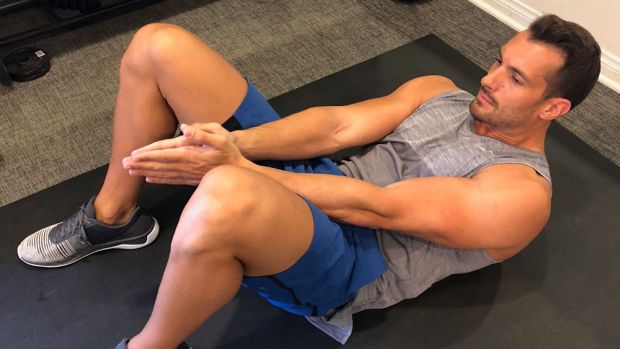
“Lie on your back with your feet flat on the ground and knees bent,” says Freeman. “Extend your arms and bring your hands together between your knees. Curl your chin towards your chest, lift your shoulders off the ground and reach your hands as far forwards as you can. Lower your shoulder blades back towards the ground.”
Side crunch
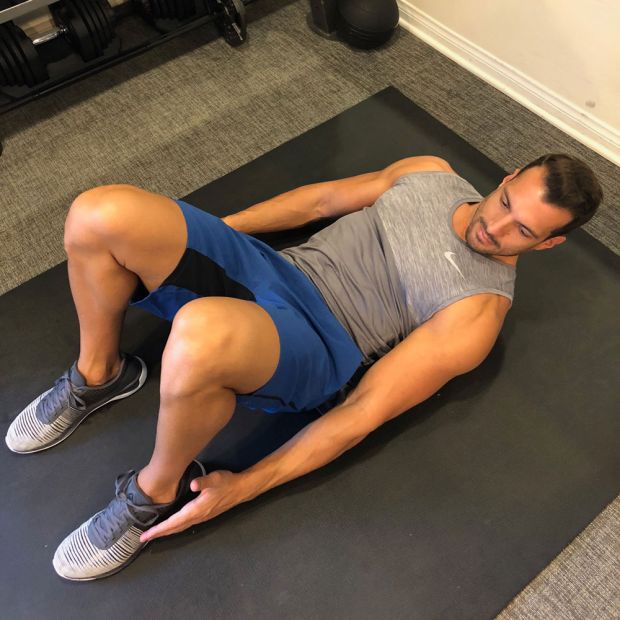
“Lie on your back with your feet flat on the ground and knees bent,” says Freeman. “Extend both arms towards your feet. Curl your chin towards your chest, lift your shoulders off the ground, pull your bellybutton into towards your spine and reach one arm forwards to tap the heel of each foot, then the other, without lowering your shoulders back to the ground in between.”
Sign up for workout ideas, training advice, reviews of the latest gear and more.
Rope climb
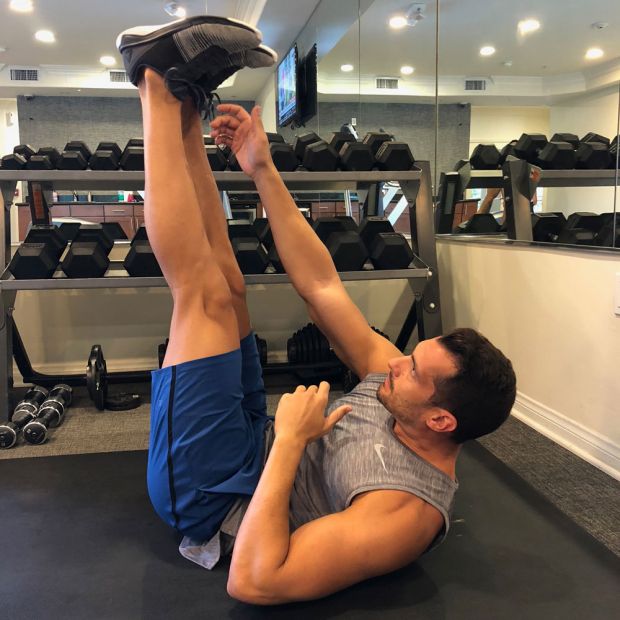
“Lie on your back with both legs extended towards the ceiling, your elbows bent and your hands on your chest,” says Freeman. “Curl your chin towards your chest, lift your shoulder blades off the ground and reach one arm at a time towards the opposite foot – the sort of hand-over-hand movement you’d make if climbing a rope. Keep your shoulder blades lifted and core engaged throughout.”
Reverse crunch
This variation on the crunch most people are familiar with involves moving your legs to your chest, rather than raising your torso off the floor, and it’s actually the more effective of the two moves. That’s because it hits your entire abs region and the lower abs in particular, an area for which the standard crunch doesn’t do a whole lot. The reverse crunch is also easy to do correctly, while sloppy form often results in people who knock out a load of crunches having sore necks (rather than sore abs) the following day.
To perform the reverse crunch, lie on your back and raise your legs so your thighs are vertical and your knees are bent at 90°. Use your abs to draw your knees in to your chest and lift your hips off the ground. Hold for a second, then lower slowly.
Hollow hold
This isometric hold is a gymnastics staple and will help you build the strength to perform all manner of advanced moves in future. Lie on your back with your arms extended behind your head. Press your lower back into the floor and raise your arms, shoulders and legs off the ground. Hold that position, but if at any point your lower back leaves the floor end the rep – you’ll be doing more harm than good. That’ll probably happen pretty quickly when you first attempt the move, but work up to holding the position for 30 seconds at a time.
Knees to elbow
Start in the top press-up position with both hands flat on the ground under your shoulders and your body forming a straight line from your neck to your heels.
Brace your core and, keeping your hips square to the ground throughout, slowly lift one leg off the floor. Bend your knee to bring your leg up towards your chest until your knee and elbow touch. Maintaining the tension in your core, slowly move the raised leg back to its starting position. Alternate sides with each rep, and aim for three sets of ten reps each side – that’ll really have your stomach muscles working.
Dead bug
This is a great move for working both the upper and lower abs without putting pressure on your neck or lower back. Lie on your back with your arms extended above you and your knees bent at 90° and positioned above your hips. Simultaneously extend your right arm out behind you and your left leg forwards, then bring them back to the starting position. Repeat with the opposite limbs. Keep your lower back in contact with the floor throughout.
Intermediate Stomach Exercises
Bent-knees windshield wiper
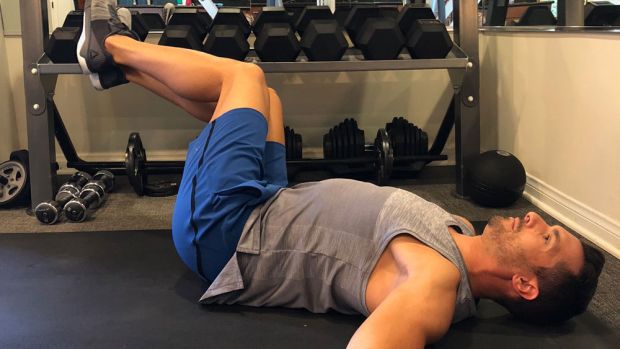
“Lie on your back with your feet off the floor and knees bent at a 90° angle,” says Freeman. “Extend your arms out to the sides with your palms flat on the floor. Keeping your head on the ground and core engaged, drop your knees over towards the right, stopping 15cm from the ground. Pause for three seconds and then reverse the movement to the opposite side.”
Scissor kick
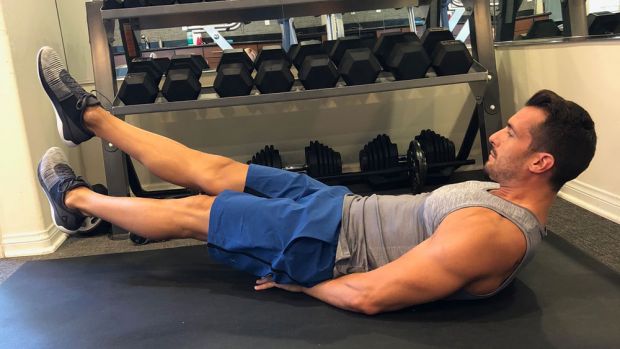
“Lie on your back with your knees bent towards your chest and your hands under your glutes,” says Freeman. “Curl your chin towards your chest and lift your shoulder blades off the ground. While keeping your lower back pressed into the ground, extend your legs, holding them 15cm above the ground, and begin to criss-cross the feet.”
Plank shoulder tap
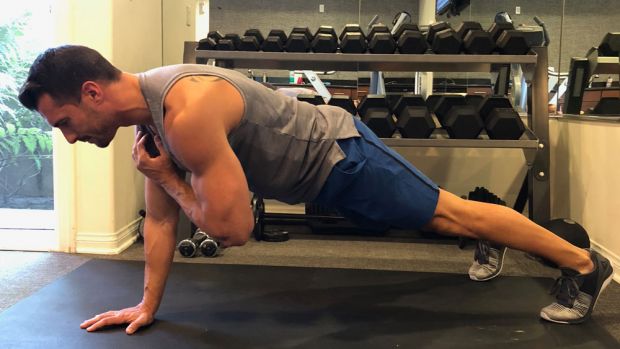
“Start in the top press-up position with your hands directly under your shoulders and your feet hip-distance apart,” says Freeman. “Keeping your head, hips and heels in a straight line, and your core and glutes engaged, lift one hand and tap the opposite shoulder. Continue at a steady pace, alternating sides.”
Russian twist
The Russian twist is one of the best exercises for targeting your obliques – the muscles that run down the sides of your stomach and are essential to performing any kind of twisting movement. Sit on the ground with your feet planted. Lean back until your torso is at a 45° angle and raise your feet off the ground. Link your hands in front of your chest and then rotate your torso so your arms go all the way over to one side. Then rotate all the way in the other direction. You can make this move easier by putting your feet on the ground, or make it harder by holding a weight like a sandbag, medicine ball or light dumbbell.
Leg raise
This exercise focuses on the lower abs, making it the perfect foil to the classic crunch, which tends to work only the upper abs. Lie on the floor with your legs extended and together. Keeping your legs as straight as possible, lift them to point at the ceiling or as close as you can get. Lower, without touching the floor with your legs or feet, and repeat.
See related
Advanced Stomach Exercises
Dumbbell flutter kick
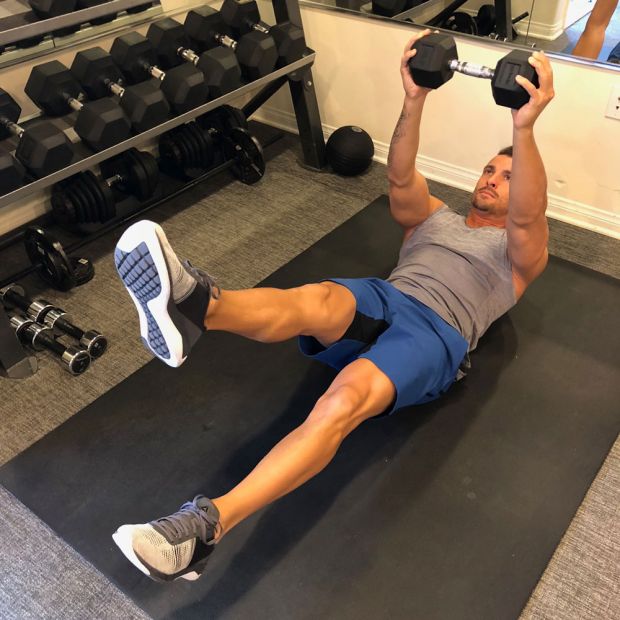
“Lie on your back with your knees bent towards your chest, holding a dumbbell by your chest,” says Freeman. “Curl your chin towards your chest and lift your shoulders off the ground, then extend your legs until they’re at a 45° angle to the floor and extend your arms towards the ceiling. Lower one leg until it is around 10cm above the floor, then alternate raising each leg at a fast but controlled pace, keeping your lower back glued to the floor throughout.”
Bicycle crunch
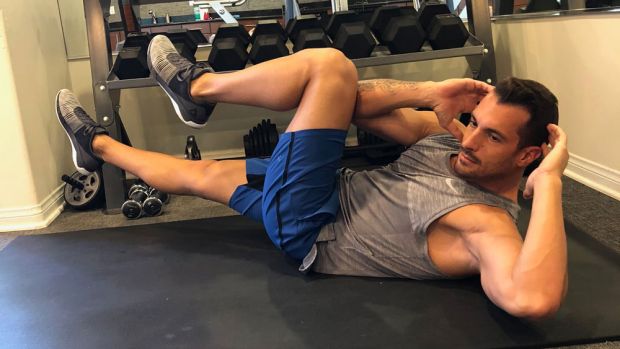
“Lie on your back with your hands behind your head and your elbows wide, and both hips and knees bent at a 90° angle so your lower legs are perpendicular with the floor,” says Freeman. “Curl your shoulders off the ground, extend your right leg and twist your right elbow to the outside of the left knee. Bring your torso back to the centre then and twist in the opposite direction, while switching which leg is extended. Continue to alternate at a steady pace.”
Dumbbell extension
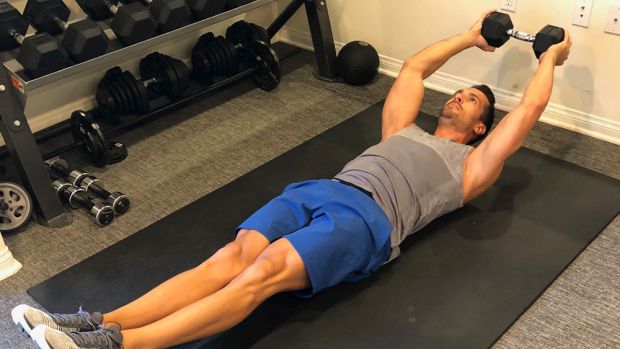
“Lie on your back with your knees bent towards your chest and arms extended towards the ceiling, holding one dumbbell in both hands,” says Freeman. “Keeping your lower back pressed into the ground, extend your legs and move your arms behind your head, bringing your biceps towards your ears and keeping your legs around 10cm off the ground. Hold the extended position for two seconds, then bend the knees back in and bring the dumbbell back up.”
Abs roll-out
To do the abs roll-out you’ll need an abs roller or a barbell with two plates on. Get on your knees and hold the roller or barbell with both hands. With a straight back, extended arms and braced core, slowly lean forwards to straighten your body, making the roller or the barbell glide forwards for a slow three- to five-second count.
Once you’ve reached as far forwards as you comfortably can, get ready for the hard part: you need to roll back to your starting position. This is what takes the abs roll-out from a standard stomach exercise to something really quite taxing. After you’re back up, breathe, congratulate yourself for completing a rep and then go again. Never go further down than you feel your back can comfortably support. Aim for three sets of five roll-outs.

Nick Harris-Fry is a journalist who has been covering health and fitness since 2015. Nick is an avid runner, covering 70-110km a week, which gives him ample opportunity to test a wide range of running shoes and running gear. He is also the chief tester for fitness trackers and running watches, treadmills and exercise bikes, and workout headphones.
